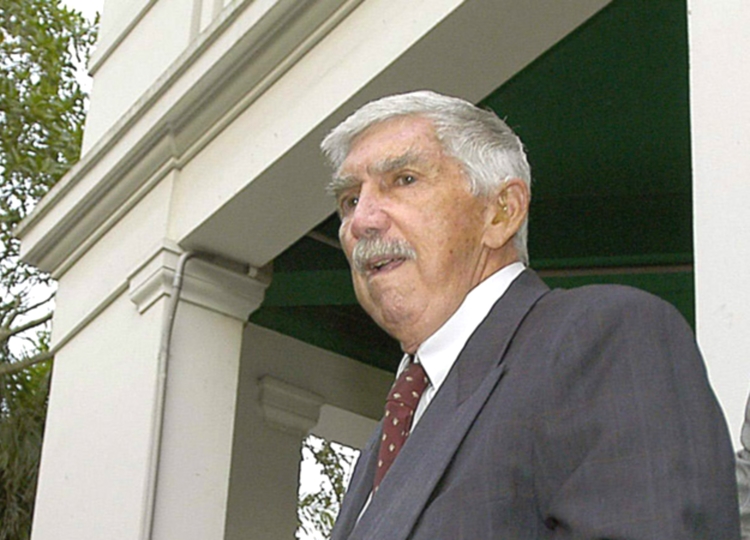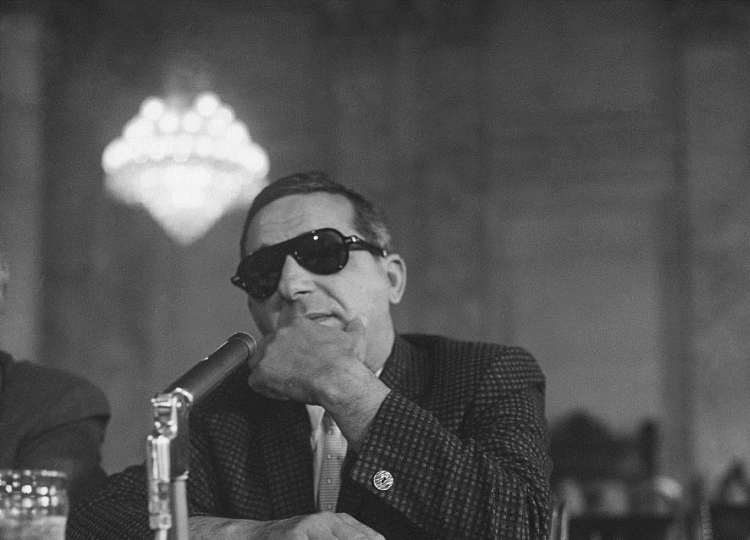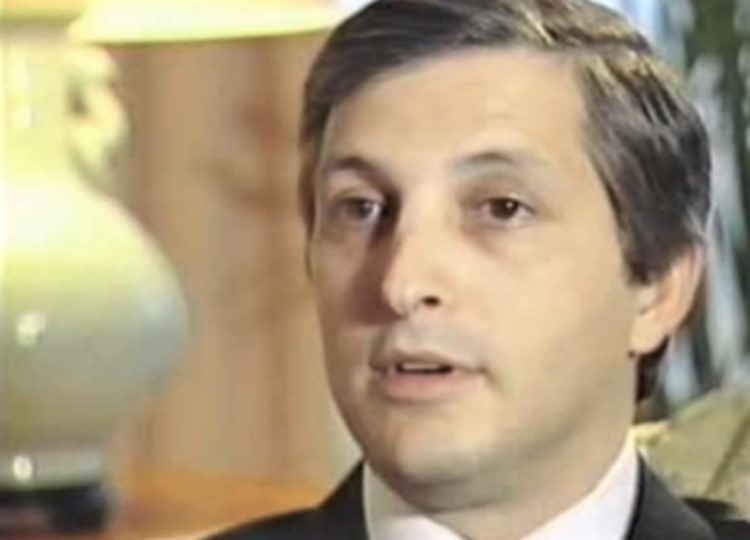The Carmen–Otash Orthodoxy
Jeanne Carmen alleged in her odd memoir that she received, during the early morning hours of August the 5th, a mysterious telephone call from a man whose voice she did not recognize. The mysterious voice informed her that Marilyn was dead and advised Jeanne to keep quiet, otherwise she, too, would be fitted into a body bag. Partially in shock and unsure if she could believe the caller, she quickly dressed, got in her car and headed to Fifth Helena. The only thing on the radio was news about Marilyn’s death. The reality at Fifth Helena was one of chaos by the time she arrived there. Even so, and still reeling from the news of her best friend’s death, she parked along the curb. When two men who were dressed in dark suits and carrying hand-held transceivers approached her, she quickly left. On the way back to her apartment, she stopped at a beach familiar to her, Marilyn and Bobby Kennedy: she wanted to reminisce.
Much to her dismay, when she arrived home, she found her apartment in shambles, completely ransacked, only to be confronted by the infamous private detective, Fred Otash. Jeanne knew Otash; but even so, he threw her to the ground and produced a gun which he pointed at her and then pulled the trigger. The gun was not loaded. He could easily kill her, Otash announced. Then he added this: the men who ordered Marilyn killed also wanted to kill Jeanne. He dissuaded them. Otash then recounted for Jeanne exactly how Marilyn had been murdered.
Sam Giancana sent four killers to Marilyn’s house during the night of August the 4th; but only two entered. They found her in bed, held her down, used a rectal tube and filled her with enough Chloral hydrate to launch her to the lunar surface. One of the murderers anally raped Eunice Murray and then threatened her: if she ever revealed the night’s events or talked to the police, they would return and rape her again. The murderers then instructed Eu-nice as follows: telephone Dr. Greenson and report Marilyn’s death; when the police officers arrive, report that Robert Kennedy had visited Marilyn earlier that day; also report that a fierce argument erupted between Marilyn and the attorney general; and finally, report Marilyn’s sudden depression and her sad desperation caused by Robert Kennedy’s unexpected rejection.
Even though Marilyn was heavily drugged, her ability to use the telephone was not impaired. After the mobsters left, according to Otash, Marilyn telephoned Peter Lawford’s beach house where the attorney general was staying. Lawford answered the telephone; Marilyn asked for her former lover. Lawford became concerned when he realized Marilyn, who could barely talk by then, had dropped the telephone receiver; so he and the attorney general rushed to her aid. Once at Marilyn’s side, they found her near death so Lawford called an ambulance. The paramedics arrived within minutes, attempted unsuccessfully to awaken Marilyn, then loaded her into the ambulance and headed to Santa Monica Hospital, Lawford and Kennedy by her side. Each man hoped, even prayed, for Marilyn to survive, Otash announced; but unfortunately, Marilyn died in the ambulance while she was being transported to the hospital.
Robert Kennedy realized that his political career, along with his brother’s, would be ruined if he was discovered with a dead Marilyn Monroe: he ordered the ambulance attendants to return to 12305 Fifth Helena. Once there, Otash revealed, Marilyn’s body was placed in her bed and the telephone receiver placed in Marilyn’s hand, transforming the bedroom scene into one suggesting that she had committed suicide, as if that telephone receiver would perform such a magical transformative trick. Afterwards, Kennedy and Lawford searched Marilyn’s hacienda for Afterwards, Kennedy and Lawford searched Marilyn’s hacienda for materials, notes or letters or tapes, connecting the middle Kennedy brothers to Marilyn. Apparently satisfied they had al-ready recovered all the extant evidence of any connection to her, Robert Kennedy agreed to financially compensate the paramedics and Eunice Murray for their cooperation and silence. The good Samaritans hurriedly departed and returned to Lawford’s Santa Monica beach house where a helicopter waited to whisk Robert Kennedy out of Los Angeles.
According to Otash according to Jeanne Carmen, a drunken and scared Peter Lawford became concerned that he and Robert Kennedy had possibly missed some incriminating evidence linking the attorney general and the president to the now dead movie star; so Lawford telephoned Otash, drove to Otash’s home and asked the private detective to sweep Marilyn’s house yet again. Otash refused but agreed to send an associate. Immediately after Lawford left Otash, the private detective telephoned Johnny Roselli and delivered an interesting report: Peter Lawford had removed all the evidence linking Marilyn with the middle Kennedy brothers. Roselli then instructed Otash to remove any evidence linking Giancana to Marilyn and then to clean Jeanne’s apartment, also.
The account allegedly provided by Fred Otash through Jeanne Carmen’s memoir is loaded with problems. Let’s start with the following: if Robert Kennedy realized that he could not be seen with the dead Marilyn Monroe, why would he go to the hospital with a Marilyn Monroe who was comatose and nearly dead? Certainly, his appearance with her at the hospital, like his discovery with her cooling corpse, would have generated the same embarrassing questions, assumptions and rumors, the situation he desperately needed and wanted to avoid. For him to climb into the ambulance with Marilyn and brother-in-law was absolutely nonsensical and illogical.
Does this strike you as odd? One of the murderers, the one who sexually violated Eunice Murray, instructed her not to talk to the police; but then he immediately instructed her to talk to the police about Marilyn and Robert Kennedy. That is absolutely nonsensical and illogical as well.
How could Robert Kennedy be certain that the paramedics he agreed to financially compensate for their silence, or Mrs. Murray for that matter, would not later reappear and blackmail him? Lawford, also, could be a potential blackmailer or a target of a blackmailer? Robert Kennedy certainly was a trusting fellow. Some might even call him extremely gullible.
Apparently Mrs. Murray did not join Lawford and Robert Kennedy in the ambulance with the dying Marilyn. What did Eunice do while she waited for their return? According to the Otash account, Mrs. Murray just hung around Fifth Helena waiting? Waiting for what exactly? How could she have known at that point if Marilyn would live or die, if Marilyn would ever return to Fifth Helena? With the killers gone, Peter Lawford and Robert Kennedy gone in the ambulance with a comatose and dying Marilyn, any prudent person, particularly someone who had just been unceremoniously raped, would have departed Fifth Helena and its environs as quickly as possible. Not to have done so was, well―idiotic! Besides, Fred Otash did not mention Norman Jefferies who was allegedly, at least according to him, watching television with Eunice. Why was Jefferies missing from the account Otash revealed to Jeanne Carmen?
If Sam Giancana wanted to implicate the middle Kennedy brothers in Marilyn Monroe’s murder, why bother with the tedium and the obscure approach of making her death appear to be a suicide caused by a drug overdose? Certainly a more direct approach would have been more logical. Additionally, Otash reported to Johnny Roselli that Peter Lawford had most likely cleaned out any incriminating evidence that would link the Kennedy’s with Marilyn, about which Roselli did not express any trepidation; but if Giancana wanted to frame the middle Kennedy brothers by implicating them in Marilyn’s death, Johnny Roselli’s lack of concern regarding the lack of evidence that would accomplish that goal directly opposed reason and logic; and Roselli’s indifference thereto did not, and does not, make any sense at all. Likewise, if Fred Otash was working for Giancana to frame the middle Kennedy brothers, when Otash’s associate returned to Fifth Helena, upon Peter Lawford’s insistence, evidence that directly linked the Kennedy’s to Marilyn and her death could have, and should have, been planted in her hacienda, thereby replacing the evidence removed by the Kennedy’s brother-in-law; but apparently neither Otash nor Roselli, nor even Giancana, thought of that obvious strategy, a curiosity in stark opposition to what a fellow might expect from a master criminal and a don of the MOB.
At what time of the night on the 4th of August did the MOB dispatched assassins murder Marilyn? Otash through Jeanne Carmen did not indicate that detail; but the time must have been near 12:00 midnight or an amount of time after Carmen allegedly spoke to Marilyn about a pill delivery. More than likely by that time on August the 4th, Marilyn had become an unresponsive body or was possibly already dead.
After learning of Marilyn’s tragic death, Jeanne asserted that she quickly dressed, jumped in her car and drove to Fifth Helena on Sunday morning. When she arrived there, she observed a multitude of cars parked in the cul-de-sac at the end of Fifth Helena; so she stopped her car a few houses before reaching Marilyn’s and pulled over against the curb. Reporters and police officers were everywhere, thick as flies; and officials dressed in suits appeared to be escorting other officials dressed in suits onto Marilyn’s premises and into her hacienda while a cop directed traffic out in front, trying to control the steady advance of rubber-necking tourists and curious fans that had already arrived so they could gawk. As she sat in her car, she asserted, parked at the curb watching the chaos, the truth, the reality of Marilyn’s death began to settle in her mind. She then noticed a couple of rough men who appeared to be Secret Service Agents staring at her, whispering to each other and speaking into their walkie talkies. As they approached, Jeanne started her car’s engine, made a sharp U-turn on Fifth Helena and rapidly drove away, her heart racing.
The scene as described by Jeanne Carmen sounded relatively reasonable; until I investigated the realities and the geography of Fifth Helena Drive. I wondered, though, as I began my Fifth Helena investigation, how could Jeanne have known that the men who approached her carrying walkie talkies were Secret Service Agents? Perhaps they were wearing those special indicative Secret Service Agent’s suits and ties.
That curiosity aside, the first thing you’ll notice about Fifth Helena, the street, as you stand in the center of its intersection with South Carmelina Avenue and gaze in a northeastern direction down its length, is just how narrow a street it actually is. If you walk along its short length of about two-hundred feet, it will occur to you that Fifth Helena Drive is, for all intents and purposes, just an alleyway that is no more than ten possibly twelve feet wide. There are no sidewalks. The single houses positioned on your left and right actually front on South Carmelina Avenue and undoubtedly have addresses associated with that street; and the white fences that define those house’s side yards stand at the edge of the pavement atop a concrete curb that defines the narrow limit of Fifth Helena. The pavement only widens slightly when it reaches a small cul-de-sac of sorts at its far end, which allows entrance into 12305 on your left and 12304 on your right. So standing there at the double gates and the white brick wall concealing Marilyn’s house from your view, if you analyze Jeanne’s description of what she encountered the morning of August the 5th when she arrived there, conflicts with reality quickly become apparent.
There simply is not enough room for a multitude of cars to park in the cul-de-sac; and positioning a police officer to direct traffic out in front of Marilyn’s house because a stream of lookie-loo tourists and fans were already descending on the street would have served absolutely no purpose. Since Fifth Helena is a blind street, or a dead end, if you prefer, the only logical place to position a police officer would have been at Fifth Helena’s intersection with South Carmelina, thus preventing the traffic from turning onto Fifth Helena and creating a complete logjam, which there must have been on Fifth Helena if what Jeanne asserted had actually happened; and too, she could not have stopped at the curb a few houses down from Marilyn’s because there is only one house before reaching 12305; and if she stopped and parallel parked along the curb, while she sat in her car, she could not have seen anyone escorting official looking people onto the premises because any view of the interior of Marilyn’s property would have been obscured by the white brick wall and dense foliage surrounding it. Carmen’s perspective would not have allowed her to actually see the main entrance door into Marilyn’s hacienda at all.
Also, according to Carmen’s memoir, her automobile at that time was a Chrysler 300 Convertible, certainly not a small, compact car. The specifications published by Fiat Chrysler Automobiles indicated that a 1962 Chrysler 300 was one inch less than eighteen feet long. Her street boat was six feet, seven inches wide, possibly one-half or more than one-half the width of Fifth Helena Drive. The 300’s turning circle between curbs was forty-three feet; its turning radius was twenty feet, six inches. Therefore, it would not have been possible for Carmen to execute a sharp U-turn, particularly if Fifth Helena was already clogged with automobiles and gawkers.
Finally, if Robert Kennedy was southeast of the San Francisco Bay, along with his wife and four of his children, spending the weekend in the community of Gilroy at the ranch of John and Nancy Bates, which was most certainly the case, how could Robert Kennedy also be in Santa Monica staying with his sister and her husband, Peter Lawford? Robert Kennedy was not in Los Angeles on August the 4th in 1962.
Most certainly, Jeanne Carmen’s assertions about the morning of August the 5th were, and are, rank unmitigated mendacities; and I here assert the following: anything stated by Jeanne Carmen relative to Marilyn’s death, her alleged murder, must be dismissed as fantasy.
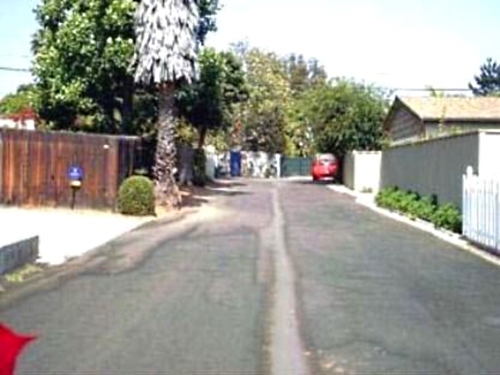
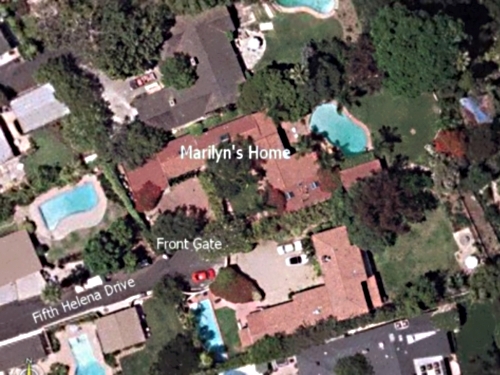
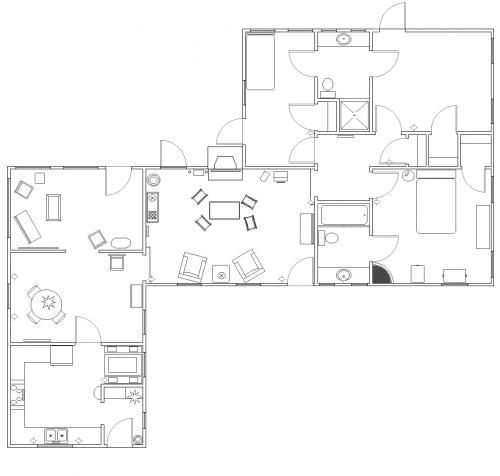
Room names, beginning at the lower left, proceeding upward and then moving to the right: Kitchen with a Breakfast Nook, Dining Room, Sun Room, Living Room with fireplace, Bedroom Wing Hallway allowing access to a small bedroom, Jack and Jill Bathroom, Large Bedroom Marilyn used as a Dressing Area, Marilyn’s Bedroom in the right hand corner with a fireplace along with her Private Bathroom. Please note that the house did not have a Laundry Room.
